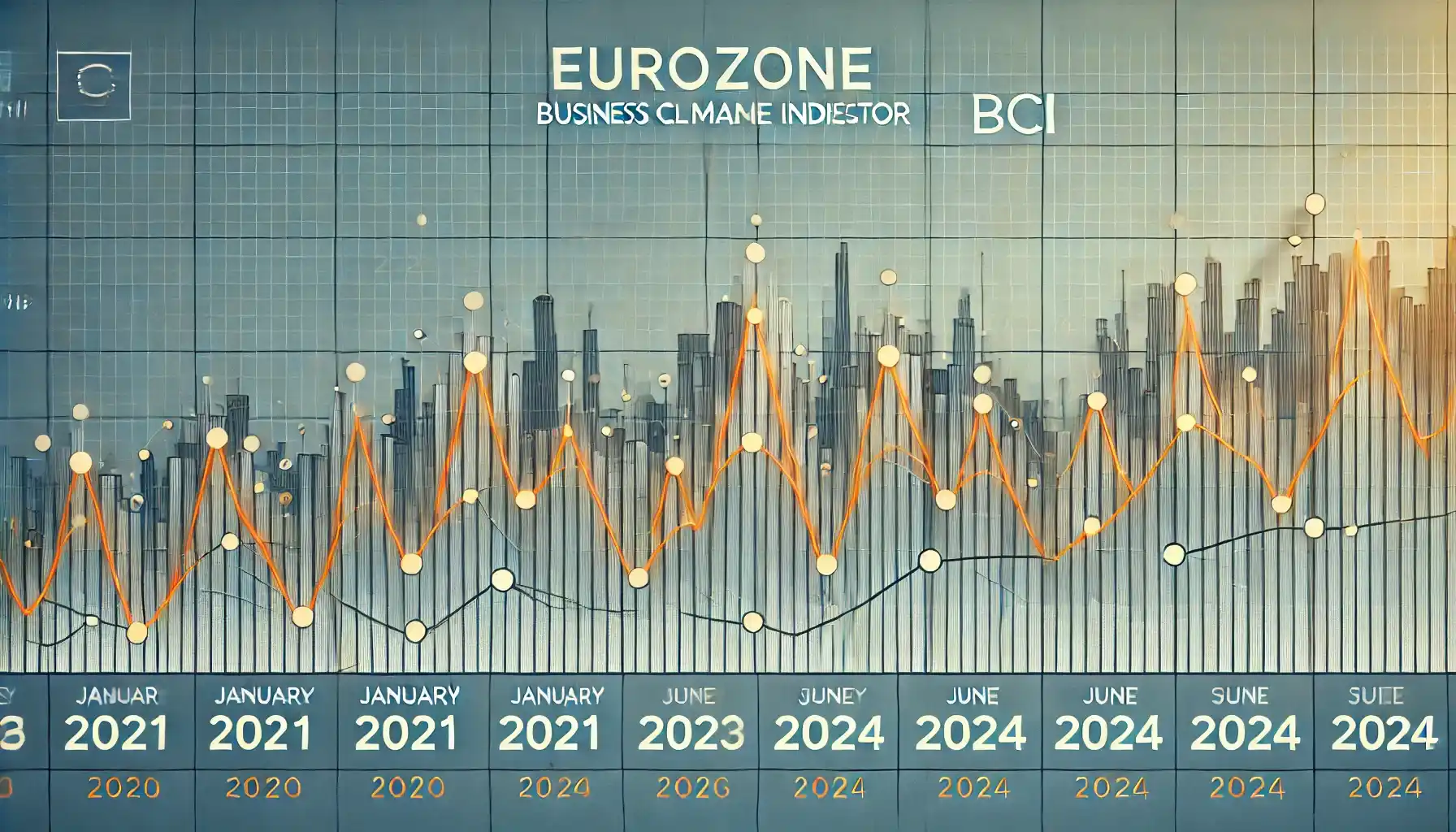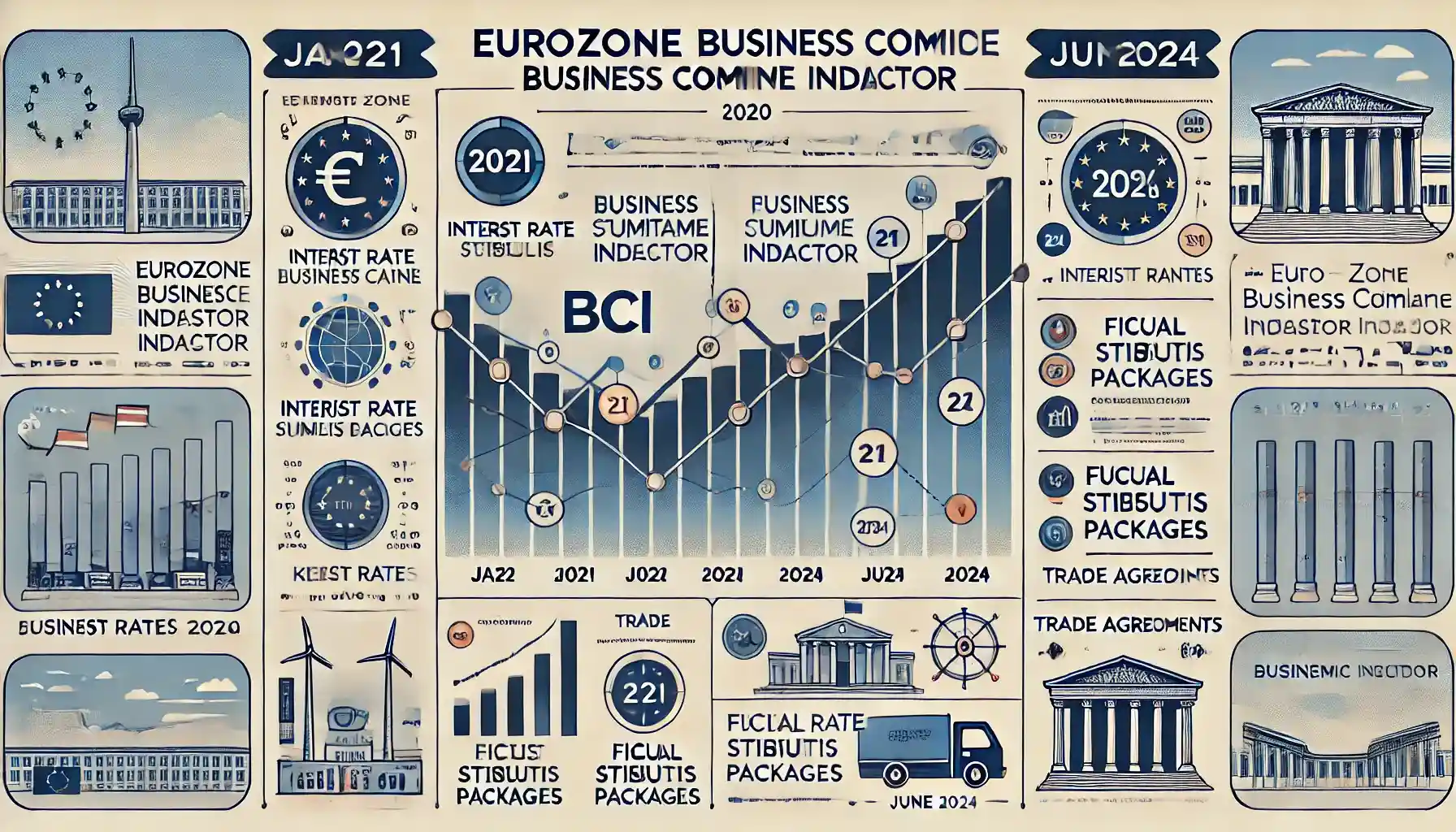The Eurozone Business Climate Indicator (BCI) plays a crucial role in understanding the economic health of the Eurozone. Whether you’re an investor, a business owner, or just someone keen on economics, getting a grasp of this indicator can provide valuable insights. Let’s dive into what the BCI is, how it works, and why it matters.
What is the Eurozone Business Climate Indicator?
The Eurozone Business Climate Indicator is a measure developed by the European Commission to assess the overall economic climate in the Eurozone. It is an essential gauge of business sentiment and economic activity, reflecting the perceptions and expectations of businesses across various sectors.
How is it Calculated?
The BCI is calculated based on surveys conducted among businesses in different sectors, including manufacturing, services, retail trade, and construction. These surveys ask about current business conditions and expectations for the future, providing a comprehensive picture of economic sentiment.
The Importance of Surveys: Surveys are vital in collecting data directly from businesses, ensuring that the indicator reflects real-world conditions. The responses are aggregated and weighted to produce a single number that represents the overall business climate.
Components of the BCI
The BCI comprises several components that together provide a holistic view of the business environment. These include order books, production expectations, past production trends, and stock levels of finished products. Each of these elements offers insights into different aspects of business activity.
Order Books and Production Expectations:Order books indicate the volume of orders businesses have received, which is a leading indicator of future production. Production expectations, on the other hand, reflect businesses’ forecasts for their output in the near term, providing a forward-looking perspective.
Why the Eurozone Business Climate Indicator Matters
The BCI is more than just a number; it’s a vital tool for policymakers, investors, and business leaders. It helps them understand the current economic environment and make informed decisions.
For Policymakers
Policymakers use the BCI to gauge the economic health of the Eurozone and to tailor monetary and fiscal policies accordingly. For instance, a declining BCI might prompt central banks to consider stimulus measures to boost economic activity.
Economic Policies and BCI:The BCI serves as an early warning system for economic slowdowns or upturns, enabling policymakers to respond proactively rather than reactively
For Investors
Investors closely watch the BCI as it provides insights into the business cycle. A strong BCI suggests robust economic activity, which can be a positive signal for stock markets, while a weak BCI might indicate economic challenges ahead.
Investment Strategies:By understanding the BCI, investors can adjust their portfolios to mitigate risks and capitalize on opportunities. For example, a rising BCI could lead to increased investment in cyclical stocks, while a falling BCI might shift focus to defensive assets.
Historical Trends and Their Impact
Understanding historical trends in the BCI can provide context for its current readings. By examining past data, we can identify patterns and correlations with economic events.
BCI During Economic Crises
Historical BCI data shows significant drops during economic crises, such as the 2008 financial crisis and the COVID-19 pandemic. These periods saw sharp declines in business confidence, reflecting widespread economic uncertainty.
Lessons from the Past:These historical trends highlight the BCI’s sensitivity to economic shocks and its value as a barometer of business sentiment during turbulent times.
Recovery Phases
Conversely, the BCI also tracks recovery phases, showing how business confidence rebounds as economies stabilize and grow. Analyzing these phases can provide insights into the resilience and recovery dynamics of the Eurozone economy.
Signs of Recovery:Indicators of recovery include a gradual increase in order books and production expectations, signaling renewed business optimism and activity.
Factors Influencing the BCI
Several factors can influence the BCI, ranging from economic policies to global events. Understanding these factors can help interpret changes in the indicator.
Monetary and Fiscal Policies
Central bank policies, such as interest rate changes, can have a significant impact on the BCI. Lower interest rates typically boost business investment and confidence, while higher rates might dampen economic activity.
Fiscal Policies:Government spending and taxation policies also play a crucial role. Stimulus measures can enhance business confidence, whereas austerity measures might have the opposite effect.
Global Economic Conditions
The Eurozone is not an isolated economy; it is deeply interconnected with global markets. International trade dynamics, geopolitical events, and global economic trends can all influence the BCI.
Global Shocks: Events such as trade wars, oil price shocks, or global financial crises can lead to significant shifts in the BCI, reflecting their impact on Eurozone businesses.
Interpreting BCI Data
Interpreting BCI data requires an understanding of its nuances and context. Here’s how to make sense of the numbers.
Comparing with Other Indicators
The BCI should be viewed alongside other economic indicators, such as GDP growth, unemployment rates, and inflation. This comprehensive approach provides a clearer picture of the overall economic environment.
Correlations and Contrasts:Sometimes, the BCI might move in the opposite direction of other indicators, offering unique insights into specific aspects of business sentiment that other metrics might not capture.
Short-Term vs. Long-Term Trends
It’s important to distinguish between short-term fluctuations and long-term trends in the BCI. Short-term changes can be influenced by temporary factors, while long-term trends provide more meaningful insights into the underlying economic trajectory.
Identifying Trends:Analyzing long-term data can reveal cycles and patterns that are crucial for making informed business and investment decisions.
BCI and Business Strategies
Businesses can leverage BCI insights to inform their strategies and operations. Here’s how.
Planning and Forecasting
A strong BCI can signal a favorable environment for expansion and investment, while a weak BCI might suggest caution and cost management.
Strategic Decisions:Businesses can use BCI data to plan their production schedules, manage inventories, and allocate resources more effectively.
Risk Management
Understanding the BCI helps businesses identify potential risks and prepare contingency plans. By staying informed about economic trends, businesses can mitigate the impact of downturns and capitalize on upturns.
Proactive Measures: For example, a declining BCI might prompt a business to diversify its product lines or explore new markets to reduce dependency on a single economic area.
Case Studies: BCI in Action
Let’s look at some real-world examples of how the BCI has influenced business decisions and economic policies.
The 2008 Financial Crisis
During the 2008 financial crisis, the BCI plummeted, reflecting severe economic distress. Policymakers responded with unprecedented stimulus measures, including interest rate cuts and bailout packages.
Business Responses: Many businesses had to downsize and restructure, focusing on survival rather than growth. Those that adapted quickly by cutting costs and finding new revenue streams managed to weather the storm.
Post-COVID Recovery
In the aftermath of the COVID-19 pandemic, the BCI has been a key indicator of economic recovery. As the BCI began to rise, it signaled improving business confidence and economic stabilization.
Strategic Shifts: Businesses that embraced digital transformation and new business models during the pandemic have seen robust growth, reflecting the BCI’s positive trend.
Future Outlook for the BCI
The future of the BCI will be shaped by various factors, from technological advancements to global economic shifts. Let’s explore what lies ahead.
Technological Disruptions
Technological innovations, such as artificial intelligence and automation, are transforming industries and influencing business sentiment. These changes will likely be reflected in future BCI readings.
Adapting to Change: Businesses that adapt to these technological disruptions can improve their productivity and competitiveness, contributing to a positive BCI.
Sustainable Economic Policies
As the Eurozone focuses on sustainable economic policies, including green initiatives and digital transformation, these efforts will impact the BCI.
Green Economy: Policies promoting a green economy can enhance business confidence by opening up new opportunities and markets, contributing to a healthier business climate.
Conclusion
The Eurozone Business Climate Indicator is a vital tool for understanding the economic health of the Eurozone. By providing insights into business sentiment and economic activity, it helps policymakers, investors, and businesses make informed decisions. As we navigate an ever-changing global economy, staying attuned to the BCI will remain crucial for anticipating trends and responding to challenges.
FAQs
1. What is the Eurozone Business Climate Indicator (BCI)?
The BCI is a measure developed by the European Commission to assess the overall economic climate in the Eurozone, reflecting business sentiment and economic activity.
2. How is the BCI calculated?
The BCI is calculated based on surveys conducted among businesses in various sectors, including manufacturing, services, retail trade, and construction.
3. Why is the BCI important for investors?
Investors use the BCI to gain insights into the business cycle, helping them adjust their portfolios to mitigate risks and capitalize on opportunities.
4. How do global economic conditions affect the BCI?
The Eurozone is interconnected with global markets, so international trade dynamics, geopolitical events, and global economic trends can all influence the BCI.
5. What role does technology play in the future of the BCI?
Technological innovations, such as artificial intelligence and automation, are transforming industries and influencing business sentiment, which will be reflected in future BCI readings.






